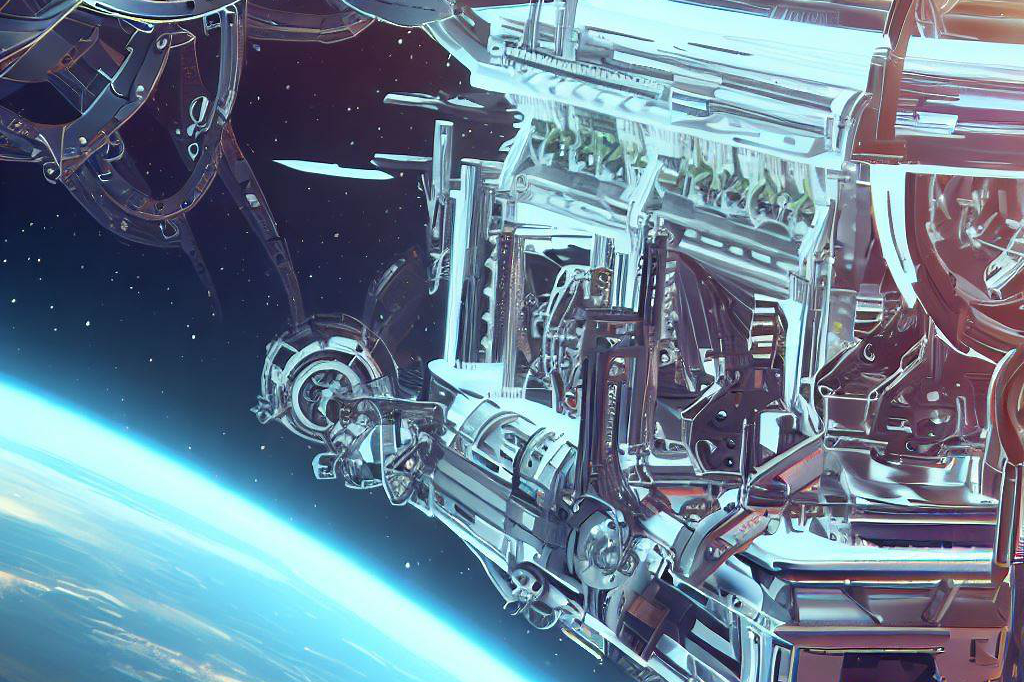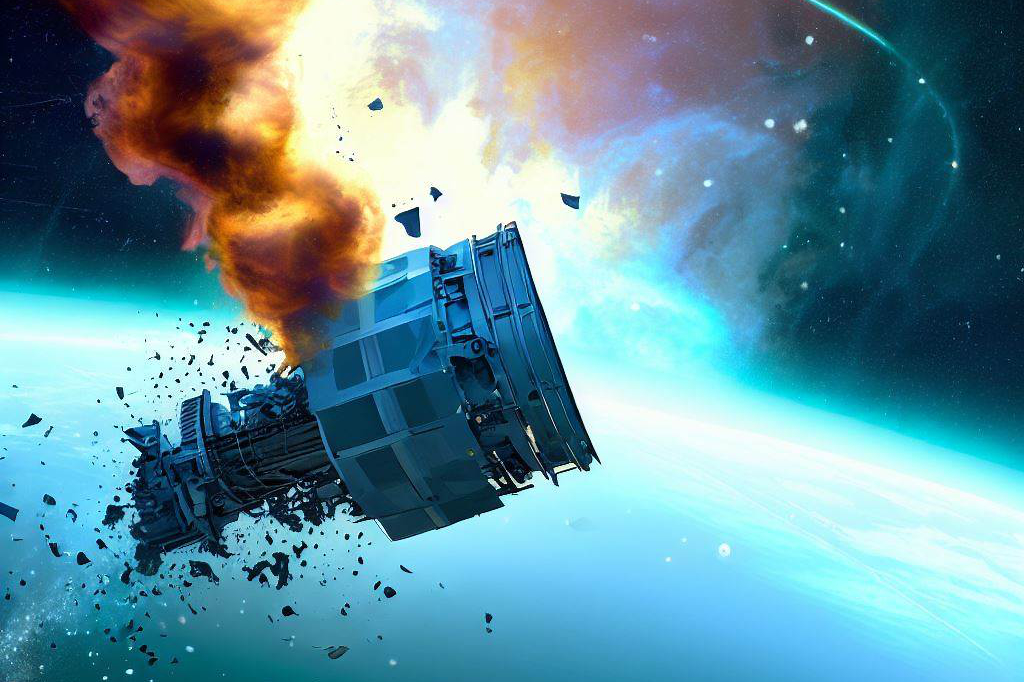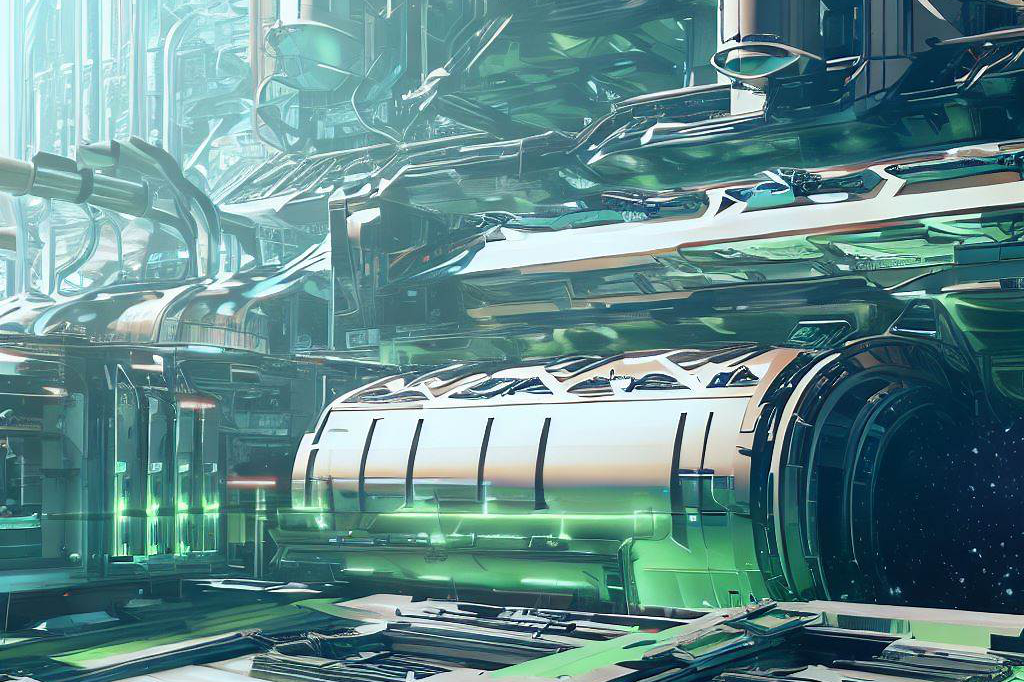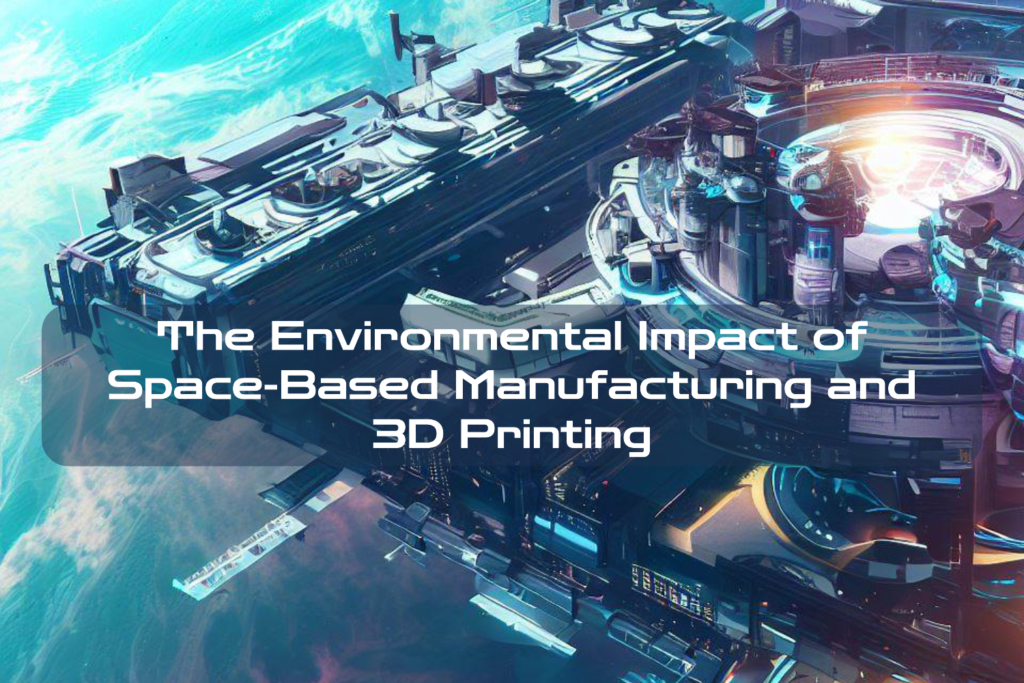Brief Overview of Space-Based Manufacturing and 3D Printing
Space-based manufacturing and 3D printing have been gaining attention in recent years as a potential solution for reducing launch costs, increasing resource efficiency, and expanding the possibilities for space exploration.
Space-based manufacturing refers to the process of fabricating or assembling materials in space using various techniques such as laser cutting, welding, and 3D printing.
3D printing, also known as additive manufacturing, is the process of creating three-dimensional objects by layering materials on top of each other until the final product is complete.
These technologies have already been implemented in several projects, such as NASA’s Recycler project for recycling waste on the International Space Station (ISS) and Made in Space’s Archinaut program for producing large-scale structures in space.
With these advancements come new opportunities, but also new challenges that must be addressed.
Importance of Discussing the Environmental Impact
As with any emerging technology, it is important to consider the potential environmental impact that space-based manufacturing and 3D printing could have.
While these technologies offer many benefits, such as reducing transportation emissions by producing goods in space instead of transporting them from Earth, they also have the potential to negatively impact our environment if not managed responsibly.
The energy required to transport materials into space and operate equipment can lead to increased greenhouse gas emissions. Additionally, there may be concerns about pollutants released during manufacturing processes or damage caused to natural ecosystems.
It is crucial that we discuss these issues now before it becomes too late to implement changes to mitigate negative impacts.
The Benefits of Space-Based Manufacturing and 3D Printing

Reduced Launch Costs and Transportation Emissions
One of the key advantages of space-based manufacturing and 3D printing is a reduction in launch costs and transportation emissions. Traditional manufacturing involves producing parts on Earth, shipping them to a final destination, and assembling them into a finished product.
This process can be time-consuming, expensive, and environmentally damaging due to the transportation emissions involved. However, with space-based manufacturing and 3D printing, it is possible to produce parts onboard spacecraft or on other celestial bodies such as the Moon or Mars.
This means that there is less need for shipping parts from one location to another. As a result, launch costs are reduced because less fuel is needed to transport materials into orbit.
Improved Resource Efficiency and Waste Reduction
Another benefit of space-based manufacturing and 3D printing is improved resource efficiency and waste reduction. Traditional manufacturing processes often involve producing excess materials in the event of defects or errors during production. These excess materials can lead to wasted resources as well as additional disposal costs.
However, with space-based manufacturing and 3D printing, it is possible to produce only the exact amount of material needed for a given project. This reduces waste while also improving resource efficiency because fewer raw materials are required for production.
In addition, some space-based manufacturing techniques involve using recycled materials from previous missions or discarded equipment. For example, NASA’s Recycler project aims to develop technology that can transform plastic waste generated during long-duration missions into feedstock that can be used for 3D printing new tools.
A New Era of Design Possibilities
Beyond the environmental benefits mentioned above, space-based manufacturing also provides designers with new opportunities they haven’t previously had access to before.
The unique environment of space allows scientists/engineers/designers/technicians to create new designs that are impossible to create on Earth due to the various restrictions, which could lead to breakthroughs in multiple fields of technology.
With the ability to use materials not found on Earth, or difficult to find, testing in a low-gravity environment becomes possible. This allows designs with better thermal management or energy efficiency that couldn’t be produced otherwise.
Overall, space-based manufacturing and 3D printing offer numerous benefits for both the environment and design possibilities. While there are still some challenges and potential drawbacks associated with these technologies, they represent a promising avenue for sustainable innovation and exploration beyond our planet.
The Environmental Impact of Space-Based Manufacturing and 3D Printing

Increased Energy Consumption for Space Transportation and Manufacturing Processes
When it comes to space-based manufacturing and 3D printing, one of the major concerns is the increased energy consumption required for transportation and manufacturing processes. Getting resources into space requires a lot of energy, such as the launch rockets consuming enormous amounts of fuel which releases CO2 emissions into the atmosphere. In addition, space-based manufacturing facilities require a lot of energy to operate.
When it comes to 3D printing, there are also some concerns about the amount of energy required in comparison to traditional manufacturing methods. For example, melting plastic filaments at high temperatures consumes more electricity than using moulds or cutting tools.
Potential Release of Harmful Chemicals or Pollutants into the Environment
Another concern regarding space-based manufacturing and 3D printing is the potential release of harmful chemicals or pollutants into the environment. The materials used in these processes may contain toxic substances that could cause harm if not handled properly. There is also a risk that once these materials are released into the environment, they could have negative impacts on ecosystems.
Additionally, many rocket propellants contain harmful chemicals like hydrazine that pose risks during transportation or when stored improperly. Therefore, there needs to be strict regulations on storing and disposing of these hazardous materials to prevent environmental contamination.
Possible Disruption to Natural Ecosystems
Space-based manufacturing and 3D printing may disrupt natural ecosystems if not executed responsibly.
Sending objects into orbit has already created a phenomenon known as “space debris”, composed primarily of abandoned satellites or fragments left from past missions that are still orbiting around Earth at high speeds, waiting for other objects in their path which will cause collisions.
Space debris poses significant risks to spacecraft, including both manned missions (such as the International Space Station) and commercial satellites. If these objects collide, it could create a cascade effect known as the Kessler Syndrome that could potentially render certain orbits unusable for decades or even centuries.
Mitigating the Negative Environmental Impact

Developing Sustainable Manufacturing Practices:
One of the most effective ways to mitigate the environmental impact of space-based manufacturing and 3D printing is to develop sustainable manufacturing practices. This includes using environmentally friendly materials, reducing energy consumption during production, and minimising waste output. Many companies are already making strides in this area by utilising recycling programs and using biodegradable materials.
For example, Made in Space has developed a 3D printer that uses recycled plastic for its filament, and NASA’s Recycler project aims to turn waste into useful resources on long-duration missions. By continuing to prioritise sustainability in manufacturing processes both on Earth and in space, we can minimise negative impacts on our planet’s environment.
Implementing Strict Regulations on Waste Disposal:
Another way to mitigate negative environmental impact is by implementing strict regulations on waste disposal. Regulations can ensure that waste is disposed of properly and is not left floating in space or polluting our planet’s ecosystem.
These regulations should include guidelines for recycling, composting, or proper disposal of hazardous materials. Governments around the world have already started taking action towards regulating waste from space activities.
The European Space Agency has established guidelines for limiting debris during satellite launches, while NASA has regulations for handling potentially harmful materials in spacecraft. Implementing these types of regulations will help protect our planet’s environment as well as keep space free from unnecessary debris.
Investing in Research for Cleaner Energy Sources:
Investing in research for cleaner energy sources can also help mitigate the negative impacts of space-based manufacturing and 3D printing projects.
Currently, a lot of the energy used during these processes comes from fossil fuels, which contribute heavily to greenhouse gas emissions. Innovative technologies such as solar panels or efficient batteries could provide clean energy solutions for both Earth-based factories and facilities located outside our atmosphere.
Developing cleaner energy sources for space-based manufacturing will help to reduce the carbon footprint of these projects and minimise negative impacts on our planet’s environment.
Case Studies: Examples of Space-Based Manufacturing and 3D Printing Projects with Positive Environmental Impacts
NASA’s Recycler Project: Turning Trash into Treasure
One of the challenges of space travel is managing waste.
NASA’s Recycler project aims to address this problem by developing a system that converts plastic waste into 3D printing feedstock. This process not only reduces waste, but it also reduces the amount of material needed to be launched from Earth.
Less material means less fuel, which translates into fewer emissions. The Recycler system is composed of three main components: a plastic shredder, an extruder, and a pelletizer.
The shredder breaks down the plastic waste into smaller pieces that can be fed into the extruder. The extruder then melts the plastic and shapes it into a filament that can be used for 3D printing.
The pelletizer cuts the filament into small pellets for storage. The pilot version of the Recycler system was tested on the International Space Station in 2016, demonstrating its potential to reduce waste and improve resource efficiency in space-based manufacturing.
Made in Space’s Archinaut program: On-Demand Manufacturing in Orbit
Made in Space is a company that specialises in space-based manufacturing using additive manufacturing techniques such as 3D printing. The company’s Archinaut program takes this concept one step further by enabling on-demand manufacturing directly in orbit. Archinaut is essentially an autonomous robotic arm equipped with 3D printing capabilities.
The arm can print large structures, such as satellites or even habitats, without having to launch them from Earth. This means fewer launches and reduced transportation emissions.
In addition to reducing launch costs and emissions, Archinaut also has implications for resource efficiency and waste reduction in space-based manufacturing. Instead of launching pre-fabricated components or structures that may not fit perfectly or have excess material, Archinaut can print exactly what is needed, reducing waste and improving efficiency.
The first successful demonstration of Archinaut technology was in 2018 when the system printed a beam in orbit. Made in Space hopes to continue developing the technology to enable larger and more complex structures to be printed in space.
NASA’s Recycler project and Made In Space’s Archinaut program are just two examples of how space-based manufacturing and 3D printing can have positive environmental impacts.
Final Thoughts

As we continue to explore the possibilities of space-based manufacturing and 3D printing, it is important that we do so in a responsible manner. This means considering not only the benefits but also the potential environmental consequences of our actions.
We must strive to balance innovation with responsibility by adopting sustainable practices wherever possible and implementing regulations that protect our planet’s natural resources. By doing so, we can help ensure a brighter future for ourselves and future generations.

C M, a seasoned editor, journalist, and consultant, is deeply fascinated by the convergence of technology, space, and the future of humanity.
With a particular interest in transhumanity, futurology, and the philosophical and ethical dimensions of these domains, C M serves as the lead contributor to SpaceSpotlight and TranscendSphere.
When not penning insightful articles on these rapidly evolving fields, C M indulges in their love for podcasts and books, proudly embracing their status as a ‘Happy Nerd Extraordinaire!’



